Anthony Vetro
Graph Signal Processing for Geometric Data and Beyond: Theory and Applications
Aug 05, 2020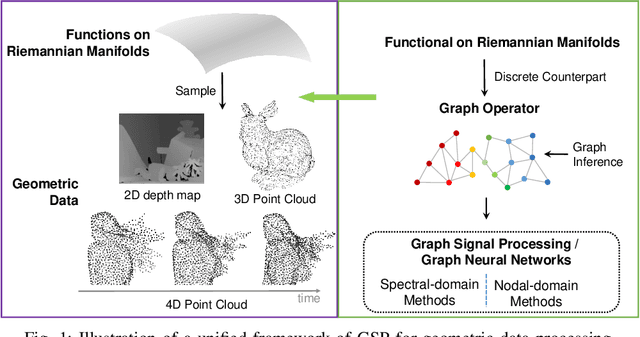
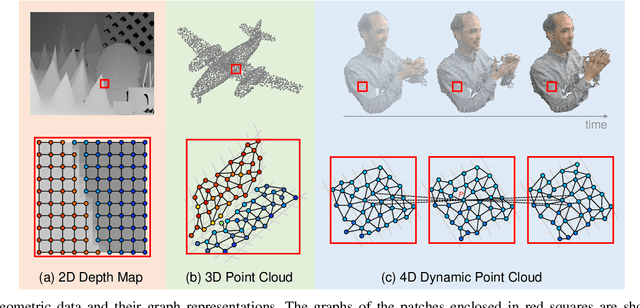


Abstract:Geometric data acquired from real-world scenes, e.g., 2D depth images, 3D point clouds, and 4D dynamic point clouds, have found a wide range of applications including immersive telepresence, autonomous driving, surveillance, etc. Due to irregular sampling patterns of most geometric data, traditional image/video processing methodologies are limited, while Graph Signal Processing (GSP)---a fast-developing field in the signal processing community---enables processing signals that reside on irregular domains and plays a critical role in numerous applications of geometric data from low-level processing to high-level analysis. To further advance the research in this field, we provide the first timely and comprehensive overview of GSP methodologies for geometric data in a unified manner by bridging the connections between geometric data and graphs, among the various geometric data modalities, and with spectral/nodal graph filtering techniques. We also discuss the recently developed Graph Neural Networks (GNNs) and interpret the operation of these networks from the perspective of GSP. We conclude with a brief discussion of open problems and challenges.
CDSA: Cross-Dimensional Self-Attention for Multivariate, Geo-tagged Time Series Imputation
May 23, 2019



Abstract:Many real-world applications involve multivariate, geo-tagged time series data: at each location, multiple sensors record corresponding measurements. For example, air quality monitoring system records PM2.5, CO, etc. The resulting time-series data often has missing values due to device outages or communication errors. In order to impute the missing values, state-of-the-art methods are built on Recurrent Neural Networks (RNN), which process each time stamp sequentially, prohibiting the direct modeling of the relationship between distant time stamps. Recently, the self-attention mechanism has been proposed for sequence modeling tasks such as machine translation, significantly outperforming RNN because the relationship between each two time stamps can be modeled explicitly. In this paper, we are the first to adapt the self-attention mechanism for multivariate, geo-tagged time series data. In order to jointly capture the self-attention across multiple dimensions, including time, location and the sensor measurements, while maintain low computational complexity, we propose a novel approach called Cross-Dimensional Self-Attention (CDSA) to process each dimension sequentially, yet in an order-independent manner. Our extensive experiments on four real-world datasets, including three standard benchmarks and our newly collected NYC-traffic dataset, demonstrate that our approach outperforms the state-of-the-art imputation and forecasting methods. A detailed systematic analysis confirms the effectiveness of our design choices.
Online Detection of Action Start in Untrimmed, Streaming Videos
Jul 23, 2018



Abstract:We aim to tackle a novel task in action detection - Online Detection of Action Start (ODAS) in untrimmed, streaming videos. The goal of ODAS is to detect the start of an action instance, with high categorization accuracy and low detection latency. ODAS is important in many applications such as early alert generation to allow timely security or emergency response. We propose three novel methods to specifically address the challenges in training ODAS models: (1) hard negative samples generation based on Generative Adversarial Network (GAN) to distinguish ambiguous background, (2) explicitly modeling the temporal consistency between data around action start and data succeeding action start, and (3) adaptive sampling strategy to handle the scarcity of training data. We conduct extensive experiments using THUMOS'14 and ActivityNet. We show that our proposed methods lead to significant performance gains and improve the state-of-the-art methods. An ablation study confirms the effectiveness of each proposed method.
Fast Resampling of 3D Point Clouds via Graphs
Feb 11, 2017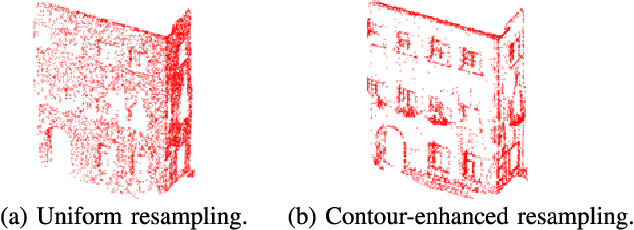
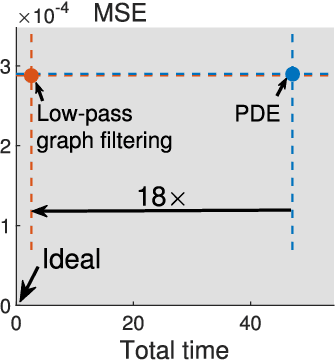
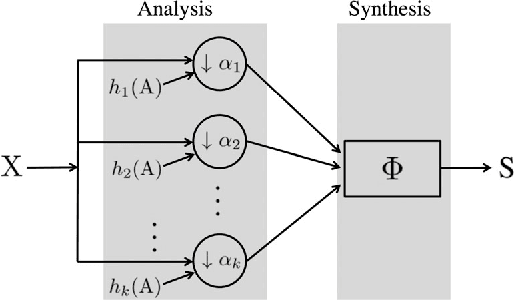

Abstract:To reduce cost in storing, processing and visualizing a large-scale point cloud, we consider a randomized resampling strategy to select a representative subset of points while preserving application-dependent features. The proposed strategy is based on graphs, which can represent underlying surfaces and lend themselves well to efficient computation. We use a general feature-extraction operator to represent application-dependent features and propose a general reconstruction error to evaluate the quality of resampling. We obtain a general form of optimal resampling distribution by minimizing the reconstruction error. The proposed optimal resampling distribution is guaranteed to be shift, rotation and scale-invariant in the 3D space. We next specify the feature-extraction operator to be a graph filter and study specific resampling strategies based on all-pass, low-pass, high-pass graph filtering and graph filter banks. We finally apply the proposed methods to three applications: large-scale visualization, accurate registration and robust shape modeling. The empirical performance validates the effectiveness and efficiency of the proposed resampling methods.
Chebyshev and Conjugate Gradient Filters for Graph Image Denoising
Sep 04, 2015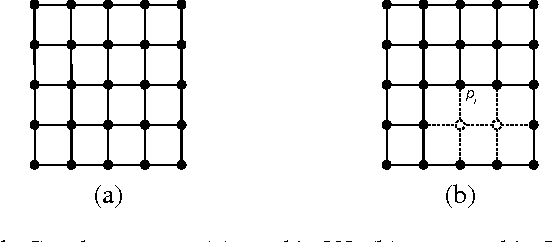


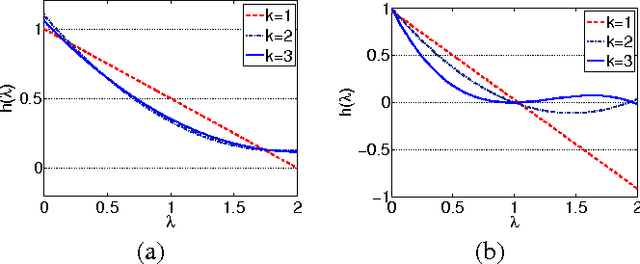
Abstract:In 3D image/video acquisition, different views are often captured with varying noise levels across the views. In this paper, we propose a graph-based image enhancement technique that uses a higher quality view to enhance a degraded view. A depth map is utilized as auxiliary information to match the perspectives of the two views. Our method performs graph-based filtering of the noisy image by directly computing a projection of the image to be filtered onto a lower dimensional Krylov subspace of the graph Laplacian. We discuss two graph spectral denoising methods: first using Chebyshev polynomials, and second using iterations of the conjugate gradient algorithm. Our framework generalizes previously known polynomial graph filters, and we demonstrate through numerical simulations that our proposed technique produces subjectively cleaner images with about 1-3 dB improvement in PSNR over existing polynomial graph filters.
* 6 pages, 6 figures, accepted to 2014 IEEE International Conference on Multimedia and Expo Workshops (ICMEW)
 Add to Chrome
Add to Chrome Add to Firefox
Add to Firefox Add to Edge
Add to Edge